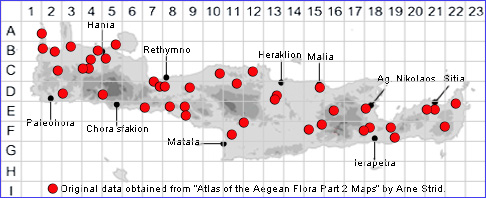SPECIES DESCRIPTION
MYRTUS COMMUNIS subsp. COMMUNIS
Family and Genus:- See- MYRTACEAE
Common Names:- Myrtle
Homotypic Synonyms:- None.
Meaning:- Myrtus (Gr) The Greek name for myrtle.
Communis (L) Growing in clumps, common.
General description:- An erect, much-branched, evergreen shrub.
Stems:-
1) 1-3 m. though often less; twigs glandular-hairy when young.
Leaves:-
1) Opposite, short-petiolate, 15-40 mm, ovate to elliptical or broadly lanceolate,
acute, entire, dark shining green above, gland-dotted and aromatic,
subglabrous.
Flower:-
1) Solitary, axillary, 5-merous, on slender pedicels 10-25 mm.
2) Sepals, c. 1.5 mm, triangular-ovate.
3) Petals, 7-10 mm, obovate, white (tinged purple in bud).
4) Stamens, numerous, conspicuous, exceeding the petals.
5) Style, surmounted by only one stigma.
Fruit:-
1) Berry, broadly ellipsoid, rather dry, 8-10 mm, glabrous, finally blackish-blue
(rarely whitish).
Habitat:- Damp places in scrubland vegetation and roadside thickets, coastal
swamps, gorges. 0-400(-700) m. mostly on non-calcareous substrates.
Distribution:- Coastal areas throughout Greece. - Mediterranean region and SW to
C Asia. Fairly scattered and common across Crete.
Flowering time:- (Apr-)June-Sept.
Photos by:- Steve Lenton

